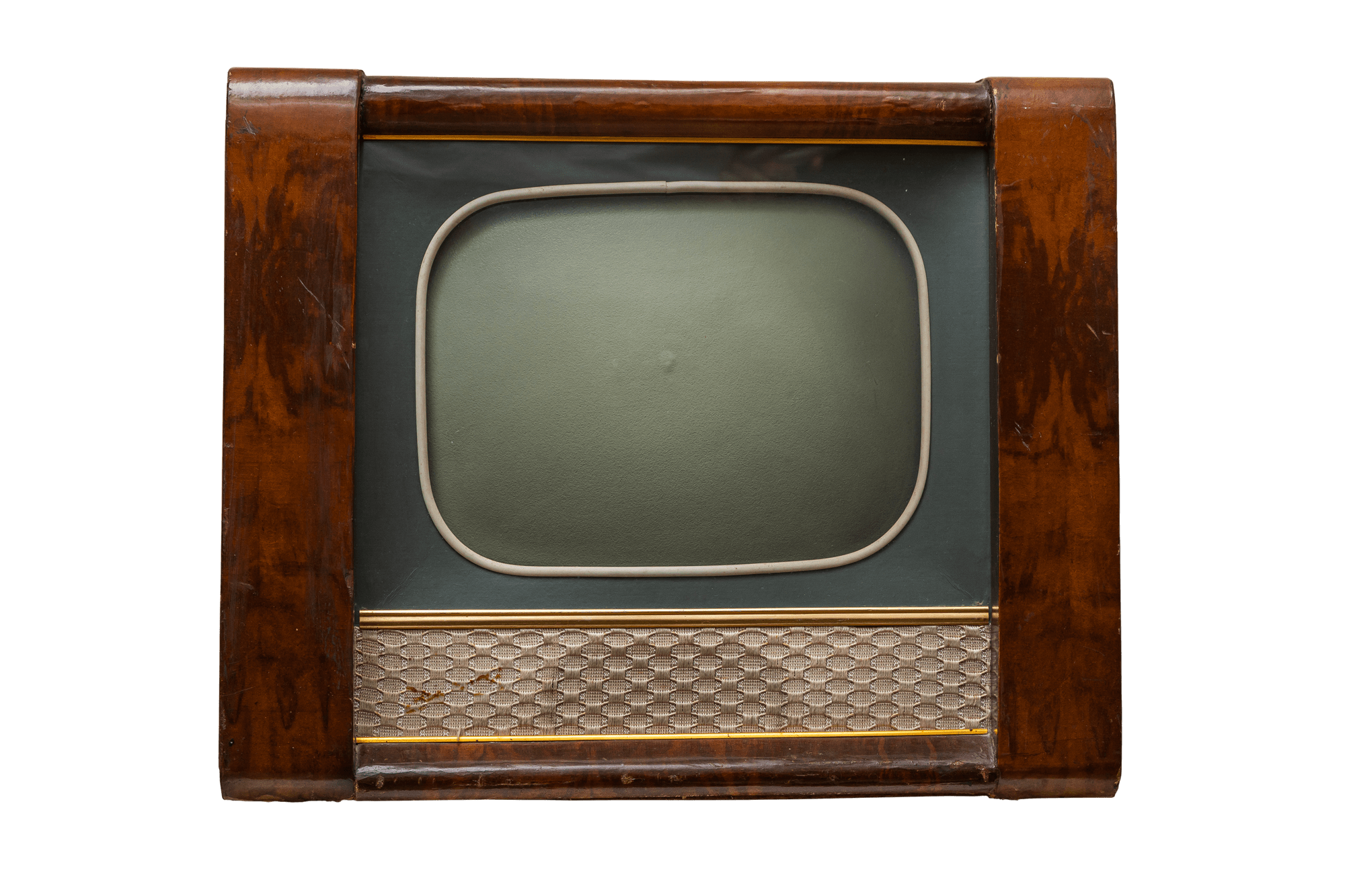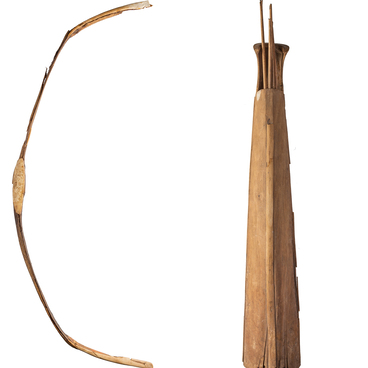Black-and-white Soviet TV sets ‘Record-12’ were produced since 1959 at radio engineering plants in Baku and Voronezh. The model, housed in the Krasnodar State Historical and Archaeological Museum-Reserve collection, was produced in Azerbaijan in 1961.
The case of the TV set is made of varnished plywood. A sound speaker behind a white plastic frame and a TV tube are located on the front frame. The TV tube converted electrical waves into light waves: through this process, the image is displayed on the screen. There are knobs for setting volume, brightness, contrast, and other parameters on the right side of the TV set.
The bottom and the back side of the device are covered with slotted cardboard sheets for handles and ventilation holes. The TV set is mounted on four rectangular legs, that are located on the corners.
In the USSR the first TV sets appeared in the early 1930s. They were a kind of set-top boxes to be connected to the radio receiver. The screens were very small — only 3×4 centimeters. In the same period, Soviet radio amateurs began to assemble such set-top boxes on their own. Some models could even get access to foreign TV live streaming.
In Leningrad, permanent television broadcasting started on September 1, 1938, and a few months later, starting from March 1939, it was available in Moscow. For receiving signals from these cities, different TV set models were designed — ‘VRK’ and ‘TK-1’, respectively. They were primarily placed in Culture Centers and Palaces of the Pioneers. By the outbreak of the Great Patriotic War, nearly 2,000 of these TVs were produced in the USSR.
The first mass TV set model KVN-49 was produced in the USSR in 1949. It cost 1,200 rubles, which was equal to two average salaries.
The first Soviet color television station was opened in Moscow on November 5, 1953. The station did not work for a long time, just a little over two years. It was more of an experiment than of a broadcast medium. It was closed in December 1955, since the equipment had become obsolete by that time. The first Soviet Union broadcast color program aired in 1967. The production of color TV set ‘Rubin’ started at the same time.
The case of the TV set is made of varnished plywood. A sound speaker behind a white plastic frame and a TV tube are located on the front frame. The TV tube converted electrical waves into light waves: through this process, the image is displayed on the screen. There are knobs for setting volume, brightness, contrast, and other parameters on the right side of the TV set.
The bottom and the back side of the device are covered with slotted cardboard sheets for handles and ventilation holes. The TV set is mounted on four rectangular legs, that are located on the corners.
In the USSR the first TV sets appeared in the early 1930s. They were a kind of set-top boxes to be connected to the radio receiver. The screens were very small — only 3×4 centimeters. In the same period, Soviet radio amateurs began to assemble such set-top boxes on their own. Some models could even get access to foreign TV live streaming.
In Leningrad, permanent television broadcasting started on September 1, 1938, and a few months later, starting from March 1939, it was available in Moscow. For receiving signals from these cities, different TV set models were designed — ‘VRK’ and ‘TK-1’, respectively. They were primarily placed in Culture Centers and Palaces of the Pioneers. By the outbreak of the Great Patriotic War, nearly 2,000 of these TVs were produced in the USSR.
The first mass TV set model KVN-49 was produced in the USSR in 1949. It cost 1,200 rubles, which was equal to two average salaries.
The first Soviet color television station was opened in Moscow on November 5, 1953. The station did not work for a long time, just a little over two years. It was more of an experiment than of a broadcast medium. It was closed in December 1955, since the equipment had become obsolete by that time. The first Soviet Union broadcast color program aired in 1967. The production of color TV set ‘Rubin’ started at the same time.



